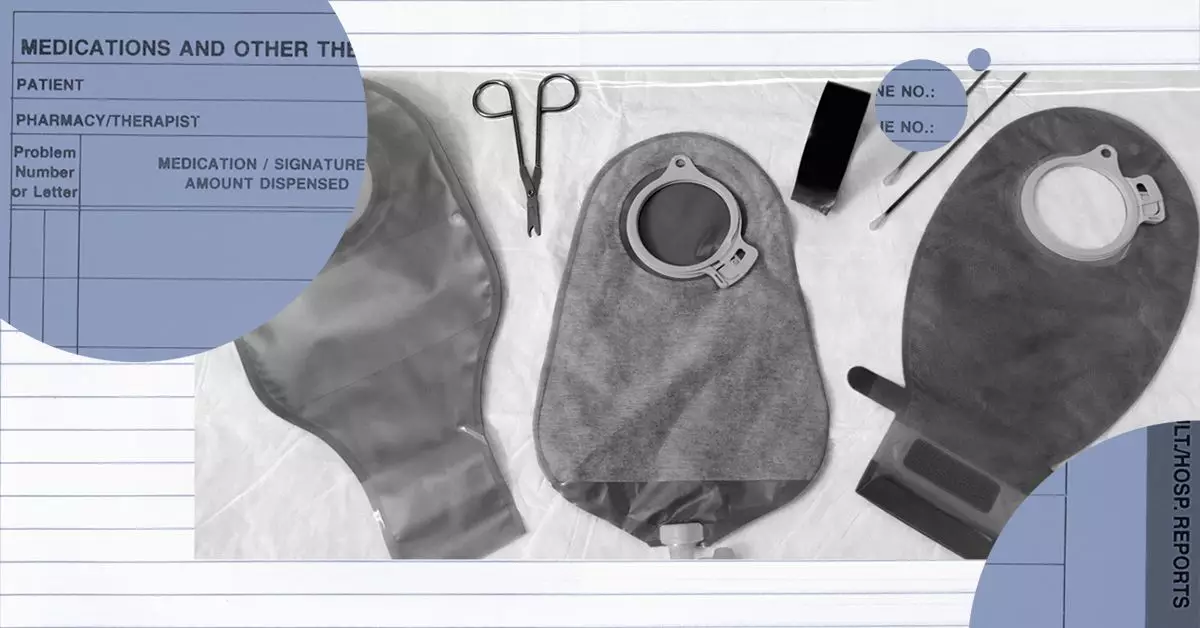An ileostomy bag is an essential medical device for individuals who have undergone an ileostomy, a surgical procedure that creates an opening in the abdomen for waste to exit the body. This opening, known as a stoma, serves as a new pathway for digestive waste when the intestines are unable to function normally due to various health conditions, including Crohn’s disease, ulcerative colitis, or certain cancers. Unlike the typical digestive process that expels waste through the anus, an ileostomy shifts this function to an external pouch, where waste is collected.
People living with ileostomy bags must understand that the device serves not only as a waste collection tool but also plays a crucial role in their overall health and well-being. An effectively maintained ileostomy bag system is vital in preventing discomfort, skin issues, and other complications. Thus, proper care and management of this device are paramount.
Caring for an ileostomy bag includes regular emptying and vigilant skin maintenance. Typically, users need to empty their bags when they are a third to half full—this could mean several times a day, depending on individual output. Waiting too long can lead to leaks, discomfort, or ruptures, all of which can cause significant distress.
When emptying the bag, it is critical to clean the skin around the stoma thoroughly. This practice helps to prevent infections and irritations, common problems for those with an ileostomy. Users should dry the area completely before reattaching the bag to ensure it adheres properly and to minimize skin exposure to waste.
Changing the pouch is also vital; ideally, this should be done every two to three days. However, individual circumstances will dictate the frequency—some may find their bags remain functional for up to a week, while others may need to change theirs more often to manage output and discomfort effectively.
Adapting to life with an ileostomy bag often necessitates significant lifestyle adjustments. One common recommendation is to wear loose-fitting clothing. Tight garments can place undue pressure on the stoma and the bag, leading to discomfort and possible damage to both the pouch and the stoma site.
Dietary habits may also need reevaluation. Some individuals find that consuming smaller meals throughout the day aids in managing their digestive output and reduces the likelihood of nighttime bowel movements. Additionally, avoiding large meals in the evening can help mitigate unwanted nocturnal issues, enhancing sleep quality.
Furthermore, it is advisable for individuals with an ileostomy to remain attentive to their bodies and any changes in their output or skin condition. If irritation or abnormalities occur, consulting a healthcare professional promptly can prevent further complications.
It’s imperative to recognize that while living with an ileostomy bag can present challenges, it does not inherently reduce life expectancy. Contrarily, for some individuals, having an ileostomy can significantly enhance quality of life by alleviating painful symptoms and preventing severe complications that would otherwise diminish health outcomes.
Understanding the root cause for the ileostomy is crucial, as some underlying health issues associated with digestive privacy do pose risks that might affect lifespan. Therefore, discussions with healthcare providers about the optimal management of these conditions are essential.
To address some frequent questions: an ileostomy bag mainly collects digestive waste expelled from the stoma. Some variations, like the ileo-anal reservoir, allow for more traditional bowel movements via the anus, but most ileostomy bags will require users to manage continuous waste output.
For individuals navigating life with an ileostomy, clarity and support are imperative. Questions about care practices, lifestyle adjustments, or potential complications should always be directed towards medical professionals, ensuring the best possible management of their condition and enhancing their quality of life.
While embracing an ileostomy may require adaptations and ongoing vigilance, proper education and proactive management can lead to a fulfilling life full of possibilities.

